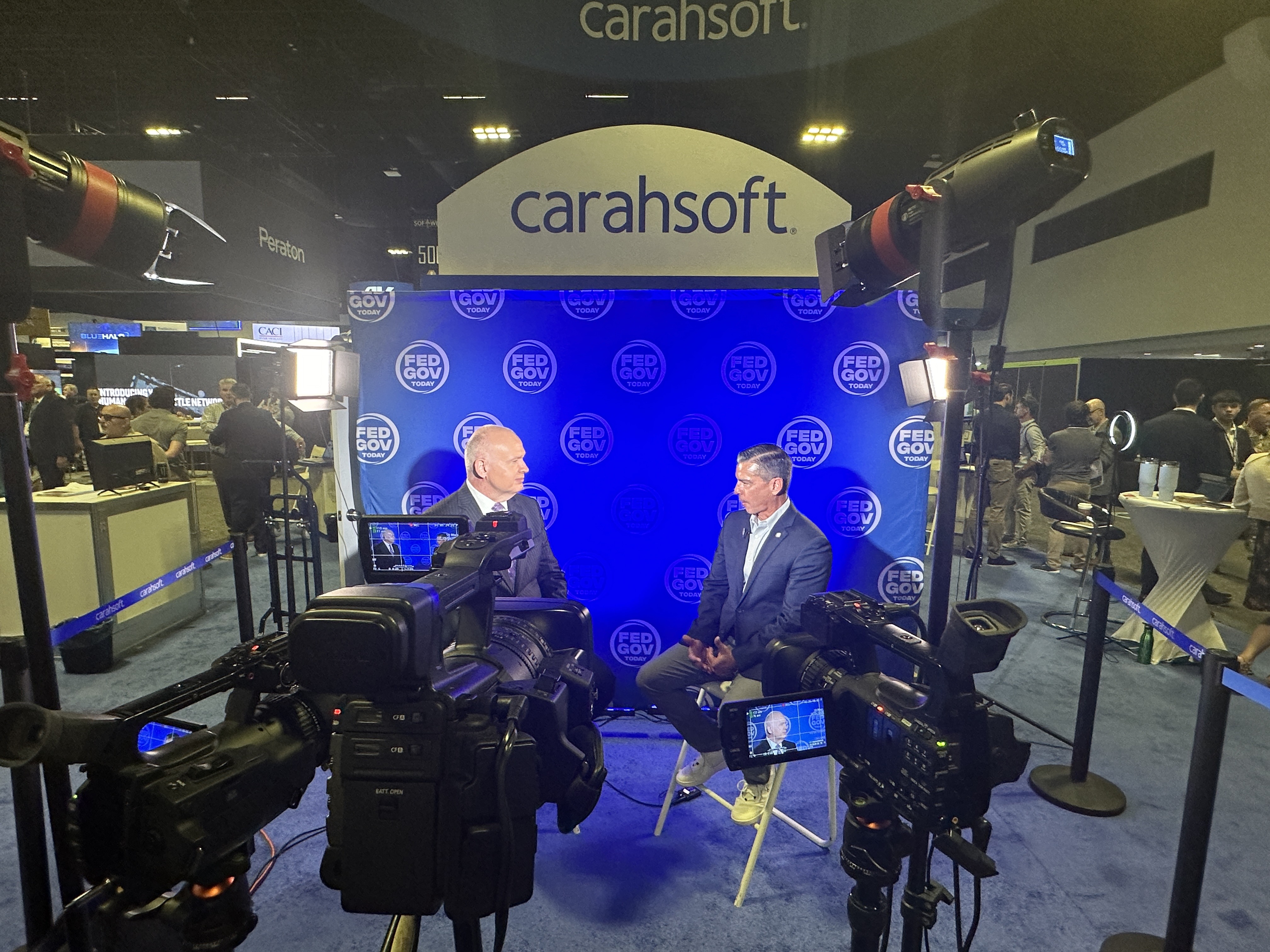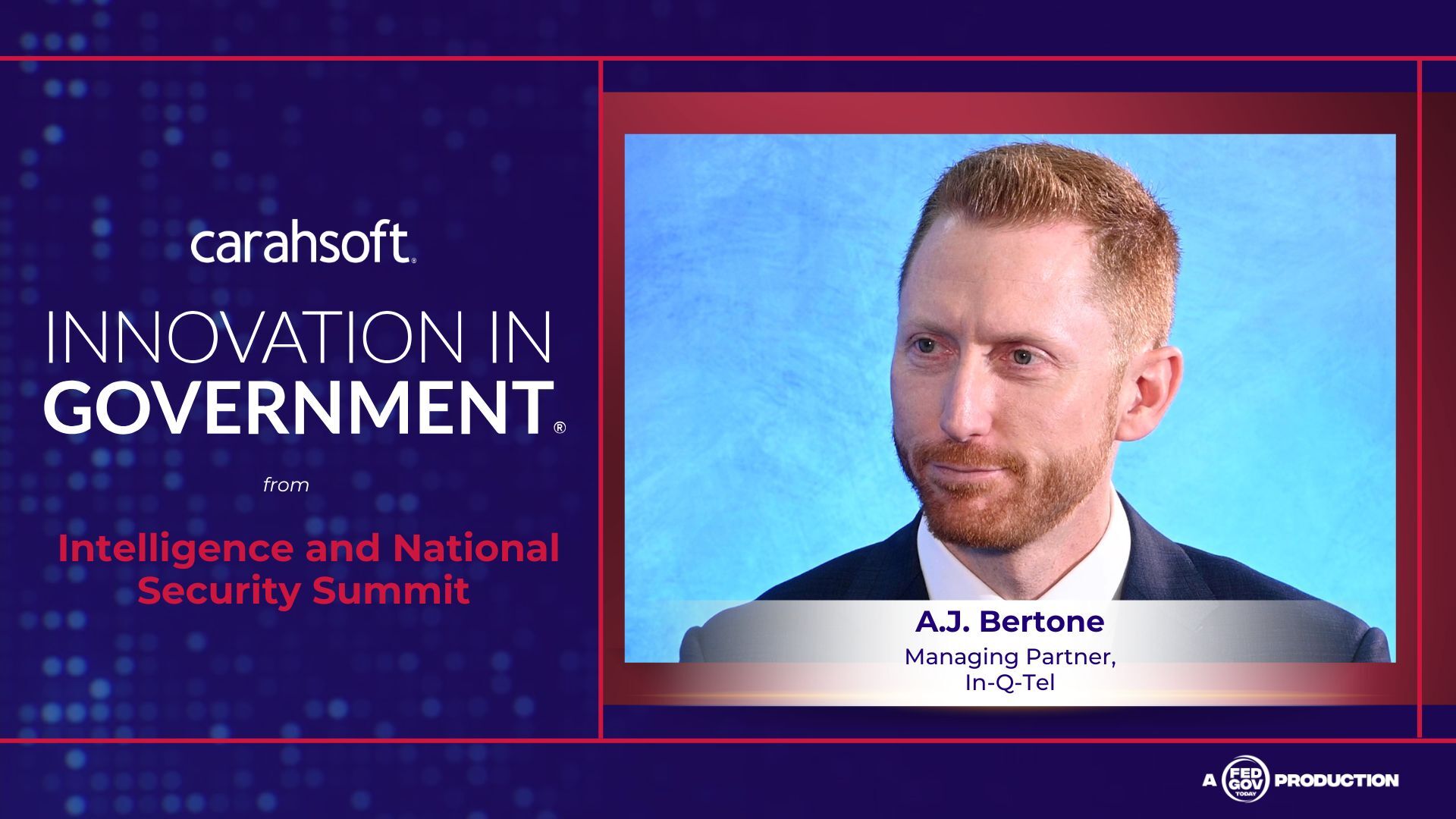Original broadcast 10/7/25
Presented by Carahsoft
The intelligence community has reached a decisive moment in how it approaches technology adoption. For decades, federal agencies debated whether to build solutions in-house or acquire them from the private sector. That debate has been settled. The community has fully embraced a buy-versus-build mindset, relying on industry’s cutting-edge technologies so government professionals can stay laser-focused on mission outcomes.
In a conversation at the AFCEA and INSA Intelligence and National Security Summit, Michael Shrader, Vice President of Carahsoft, explained that the days of government developing its own systems from scratch are long gone. “The intelligence community has long embraced and continues to embrace, like never before, a partnership with industry and industry practitioners that can understand the mission and help them drive technology outcomes,” he said. This approach frees agencies to concentrate on intelligence priorities while industry handles the complexity of technology innovation.
 Shrader emphasized that industry’s role is not just about supplying tools. It’s about delivering capabilities that directly affect how quickly and effectively intelligence professionals can act. Open-source intelligence (OSINT) is a prime example. Government alone cannot operate every digital sensor or collect the vast amounts of data available across cyberspace. Commercial providers are increasingly stepping in to own and operate sensors, process the data, and deliver near-finished intelligence back to the government. This partnership model gives agencies actionable insights more quickly than they could achieve alone.
Shrader emphasized that industry’s role is not just about supplying tools. It’s about delivering capabilities that directly affect how quickly and effectively intelligence professionals can act. Open-source intelligence (OSINT) is a prime example. Government alone cannot operate every digital sensor or collect the vast amounts of data available across cyberspace. Commercial providers are increasingly stepping in to own and operate sensors, process the data, and deliver near-finished intelligence back to the government. This partnership model gives agencies actionable insights more quickly than they could achieve alone.
Artificial intelligence has become one of the most important areas where government and industry collaboration is shaping outcomes. Shrader noted that the intelligence community is approaching AI differently than other parts of government. “It’s not, ‘we would like to incorporate AI here.’ It’s, ‘we’d like to use AI to do this specific task,’” he observed. That shift is critical because it reflects a move from theoretical conversations to mission-specific applications.
For Shrader, the greatest promise of AI lies in analytics and decision-making speed. In intelligence, every second matters. Faster analytics close the OODA loop — the cycle of observing, orienting, deciding, and acting. “Extra seconds can mean lives lost or lives saved,” Shrader explained. By shortening decision cycles, AI can literally alter outcomes on the battlefield or in counterterrorism and counterintelligence operations. The technology is no longer simply about efficiency; it’s about operational survival.
Looking over the horizon, Shrader sees the evolving China threat as the defining challenge for U.S. intelligence and national security. China’s pursuit of dominance in artificial intelligence and quantum computing represents not only a strategic race but also a counterintelligence priority. Protecting American intellectual property and ensuring technological superiority will remain central to the intelligence mission. He stressed that the community must maintain its edge in both developing technologies and defending them against theft or compromise.
Quantum computing, long viewed as perpetually “five years away,” also looms larger in the intelligence outlook. Shrader acknowledged the skepticism that has accompanied years of discussion about quantum breakthroughs. But he argued that the technology is becoming increasingly real and should be on every leader’s radar. The implications for encryption, cybersecurity, and data analysis are profound. Government and industry must prepare now to adapt to the disruptions quantum will bring.
 Cybersecurity remains another dominant concern. Shrader pointed out that artificial intelligence itself is a double-edged sword in cyberspace. While AI strengthens threats by enabling adversaries to launch more sophisticated attacks, it also equips defenders with powerful new tools. Agencies must learn to leverage AI for both defensive and offensive cyber operations while remaining vigilant about the risks of its misuse.
Cybersecurity remains another dominant concern. Shrader pointed out that artificial intelligence itself is a double-edged sword in cyberspace. While AI strengthens threats by enabling adversaries to launch more sophisticated attacks, it also equips defenders with powerful new tools. Agencies must learn to leverage AI for both defensive and offensive cyber operations while remaining vigilant about the risks of its misuse.
Ultimately, Shrader framed the discussion around a single theme: outcomes. Industry partnerships are not about technology for technology’s sake. They are about saving time, saving resources, and saving lives. The intelligence community’s embrace of industry innovation ensures that government professionals can focus on their mission priorities, from countering cyber adversaries to tracking state-based threats, while industry provides the technologies that make mission success possible.
The conversation reflects a broader trend across the intelligence and defense ecosystem: the recognition that no single organization can handle today’s threat landscape alone. The complexity of modern warfare, cyber operations, and global competition demands integrated solutions that combine government’s mission expertise with industry’s technological agility. That integration is already underway, and leaders argue it must accelerate.
The Intelligence and National Security Summit provided a clear reminder that partnership is no longer optional. It is the foundation of modern national security. Industry’s role is not to stand on the sidelines but to stand alongside the intelligence community, delivering the innovations that make missions achievable. Whether through OSINT collection, AI-driven analytics, or preparations for quantum computing, the private sector is an indispensable ally in safeguarding national security.
Key Takeaways
-
The intelligence community has fully embraced a buy-versus-build approach, relying on industry to deliver cutting-edge technology.
-
Artificial intelligence is being applied to mission-specific tasks, especially speeding analytics and decision-making to save lives.
-
Long-term challenges such as China’s technological ambitions and the disruptive potential of quantum computing demand sustained industry-government collaboration.



